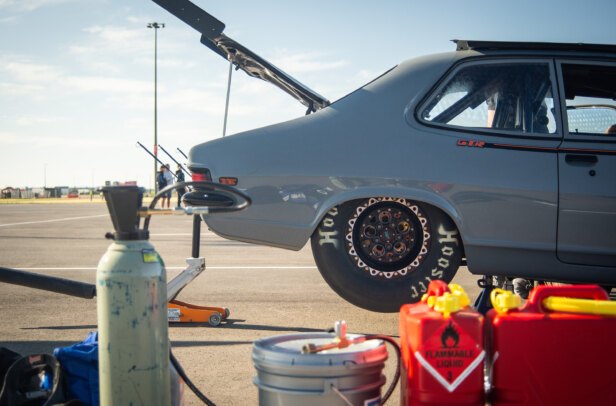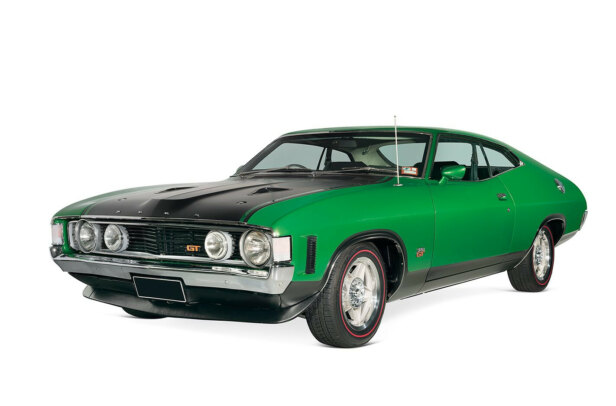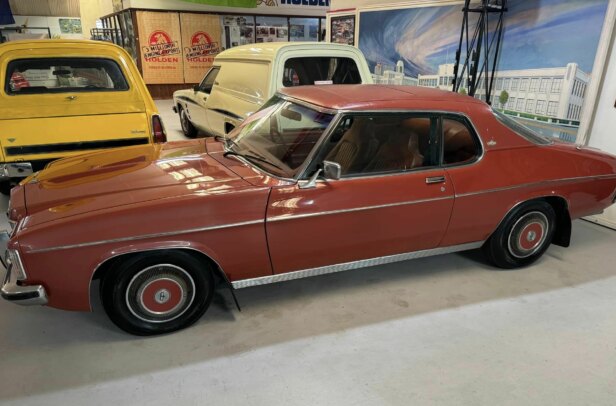A new exhibition telling the story of some of Australia’s greatest automotive designers has opened at the City Gallery in Melbourne’s Town Hall.
Dream Factory – GMH Design at Fishermans Bend 1964-2020 features a behind-the-curtain look into the ideas, drawings and culture of Holden designers at the Fishermans Bend Technical Centre, where some of Australia’s most iconic concepts and production models, from the HK Monaro through to the VE Commodore, were conceived.
“The exhibition is not about cars, actually,” says Richard Ferlazzo, Holden’s final design director at its 2020 closure.
“It focuses on two things; one is the Technical Centre and the significance of the work that was done in that building, as well as a cross-section of some of the designers that have worked there over the past 56 years.”
This includes concepts, ideas and hand-drawn sketches from Australian designers like current global General Motors design chief Mike Simcoe, Peter Hughes, John Schinella, Andrew Smith, Peter Nankervis, the late Chris Emmerson and of course Ferlazzo himself.
“What I wanted to show was some of the thinking behind the cars,” says Dream Factory curator, Harriet Edquist, who also curated the exhibition Shifting Gear: Design, Innovation and the Australian Car at the National Gallery of Victoria in 2015.
“I’m a historian and a design historian as well as an architectural historian, and I was very keen that we start to integrate Australian automotive design into the story of Australian design history.”
Edquist says that the Technical Centre was a place where engineering and design could come together in a collaborative space and was a beacon when it was created in 1964.
“It was an expensive, purpose-built, high-tech building at the time,” she says. “To my view, that is a really important building culturally for Australia. It’s like the Detroit of Victoria; it’s a really potent site.”
Commissioned under General Motors Design Chief Bill Mitchell, it was one of two new studios created by the US company that year, the other being Opel’s in Rüsselsheim, Germany. Both showed commitments to their respective markets from the parent company and sparked the rise and maturation of the local industry here in Australia.
“This was the first serious automotive studio [in Australia], and, I have to say, I can’t think of any other design studio – of any sort – that was that professional in those days,” says Ferlazzo, who first started working in the now-hallowed drawing rooms when he joined Holden in 1988.
“You’re talking a lot of creative and skilled people in a bespoke building that would’ve cost millions of pounds back in those days. An enormous investment and enormous upside for the country.”
The ground floor of the three-storey Technical Centre housed engineering and rig testing, including the foyer, the engineering office on the second floor and the design department on the top floor.
“When I joined, it was fabulous,” Ferlazzo says. “It’s quite spacious. When you’re used to designing in small spaces and you get these big studios with clay-model cars sitting in them, it’s really eye-opening, and it’s just fabulous for a car designer.”
Ferlazzo, famous for the 2005 Efijy concept, was heavily involved with the 1993 VR Commodore as senior designer and became director of Holden design in 2013.
“I just loved it – that’s why I never left,” he joked. “It was challenging on a daily basis, but you don’t need an alarm clock to get up in the morning to go to work. You want to do it.”
While there was a competitive component in whose designs would be chosen over others, Ferlazzo explains that, ultimately, there was a common goal to produce the best vehicle possible between the designers, engineers and other departments within the Technical Centre.
“There’s always tension; it may seem like it’s competitive and combative, but it’s not,” he says. “It helps to inspire each other and push each other, and then we can all get behind it and appreciate it, so it’s always a team effort. And sometimes you might highlight a certain designer who had the control of the design to put a personality behind it, but nothing actually happens like that.”
That team ethos is something Edquist has focused for the exhibition when looking into the people, mindset and culture of the Technical Centre. It was more than designing cars in Australia.
“That community of practice was not only the people working in the various studios at Fishermans Bend – there wasn’t only design, there was colour and trim, the engineering studios – but also, it was a global enterprise,” she says.
“General Motors was global, and so it bought up all of these going concerns in the 1920s and 30s [Opel, Vauxhall and Holden et al] and they operated within this global system. These guys worked on par with everyone else in the GM system globally.
“They’d be sent overseas to work in other GM studios to learn their trade; they might work on Buicks and Pontiacs down at Fishermans Bend, or the Camaro in the early 2000s,” she continues.
“So it’s that story, really – not what was specifically Australian, but the fact that Australians were part of this global system. They were incredibly competent.”
In addition to Simcoe’s current lead role in Detroit, Holden designers posted overseas include Phil Zmood, Peter Arcadipane and Ferlazzo himself, among many others.
“Australian designers and engineers are well respected in the auto industry globally for the work ethic and the holistic understanding of vehicle design and engineering, and I think that’s a function of being smaller,” Ferlazzo says.
“Even though it’s a big industry, the one we had [here] was small enough that you knew people on a first-name basis. You’re exposed to all of the issues; you could learn, whereas in a really large organisation you sort of pass it on to somebody else and you never see it again.”
The relationships within teams and with other teams saw them flourish in a unique market that demanded ingenuity and fostered creativity. Australia’s low sales volume and subsequent small teams are also what helped it become a great place to be an automotive designer.
“It’s one of the strings in the bow,” Ferlazzo says.
“That is one of the things about Australian car design – we had to improvise. Because of our low volumes, we needed to bake in at least two or three changes along the way. It’s not always easy to bring modern elements and design trends and just paste them onto an older architecture if it doesn’t have longevity baked into it.”
Think of the process and challenge in creating the radically different 1986 VL Commodore and Calais treatments compared to its original form as the 1978 VB. Or the peak of the VT-VZ platform (1997-2006) with its Crewman, Adventra, Coupe, Caprice, wagon and ute as well as all-wheel and rear-wheel drive configurations.
“It’s one of the things in Australia we do – the ability to get more out of it, to improvise to make more models,” Ferlazzo says.
“Sure, there are a lot of cars in the world that come off the same platform, but they don’t make so many different body-style variants. Most other car companies around the world with higher volumes don’t need to do that kind of thing.”
The Technical Centre showed rivals that GMH was getting serious in 1964, upping the ante for the entire local industry.
Ford Australia appointed its first official design chief, Jack Telnack, in 1966, and established a design centre in Geelong the following year before shifting to Broadmeadows in 1970. That site has undergone a recent expansion and continues to operate under former Holden designer, Max Wolff.
“The automotive industry powered our prosperity after the war; it was so important,” Edquist says. “You can read the exhibition as a summary of some of the best cars that have been produced here.”
Where and when to see the show
Dream Factory – GMH Design at Fishermans Bend 1964-2020 was set to wrap up on 31 August 2021, but it’s now been extended to 29 October 2021! You’ll find it at the City Gallery, Melbourne Town Hall, 90-120 Swanston Street, Melbourne. Opening hours are Monday to Friday, 9am- 5pm (post-lockdown). Entry is free.




Comments